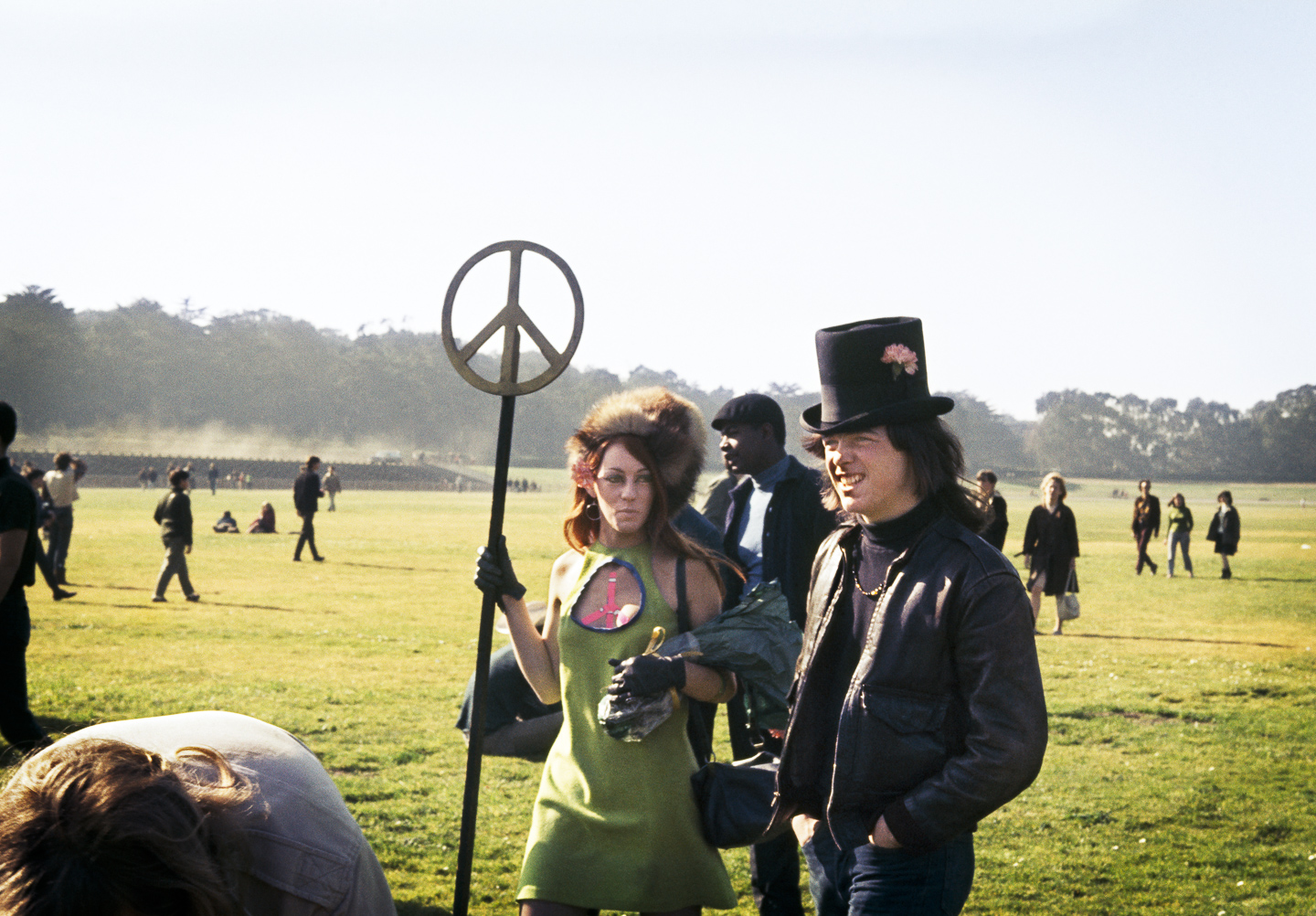Gallery of 12 photos
the slideshow
The Summer of Love has been a part of the popular lexicon for more than half a century. It is a shorthand for the era of good feeling that centered on peace, love and the hippie ethos—before the assassinations of Martin Luther King Jr., Robert Kennedy and Malcolm X—and it is inextricably linked to the music and pop culture of mid- to late 1960s San Francisco.
But while the summer 1967 didn’t officially arrive until June of that year, the Summer of Love had its unofficial start five months earlier in Golden Gate Park.
On Jan. 14, 1967, the burgeoning American counterculture made the transition from a loosely connected network of artists and political rabble-rousers to a fully fledged mainstream movement with a high-profile coming-out party, dubbed the Human Be-In.
In their underground newspaper, the San Francisco Oracle, Allen Cohen and Bay Area artist Michael Bowen announced “A Gathering of the Tribes for a Human Be-In.” Ostensibly a protest against the California State Legislature’s recent outlawing of LSD, the Human Be-In quickly blossomed into an event with far wider implications.
The event took the form of a summit of counterculture figures—some appearing together on a stage for the first time. Bay Area luminaries shared the spotlight with national figures: The Human Be-In featured high-profile appearances by LSD gurus Richard Alpert (Ram Dass) and Timothy Leary; poets Allen Ginsberg, Lawrence Ferlinghetti, Lenore Kandel and Michael McClure; activists Jerry Rubin and Dick Gregory and others.
And there was music. A representative offering of San Francisco-based bands closely associated with the growing psychedelic scene performed: The Grateful Dead (with guest Charles Lloyd), Jefferson Airplane and Quicksilver Messenger Service all played at the event. Owsley Stanley manufactured a large quantity of White Lightning LSD for distribution at the free outdoor celebration, and security (such as it was) would be handled by the local chapter of the Hells Angels.
Attendance estimates would vary widely, but most accounts agree that at least 20,000 people convened that afternoon in Golden Gate Park. The event went off largely without a hitch; apparently, there were no arrests, and despite the massive crowds, at the conclusion of the festivities, the park was relatively litter-free.
It was during his speech at the Be-In when Leary is said to have first uttered the phrase, “Turn on, tune in, drop out.” The Human Be-In captured the attention of the media; nothing of its kind had taken place before. The event signaled to mainstream America that the counterculture was a force to be reckoned with. Yet while peaceful in its aims and character, the Be-In was seen as a threat by some in “straight” society; its success demonstrated that leftist radicals and free-loving hippies could find common cause and—if only for a time—work together toward shared goals.
In many ways, the relatively spontaneous Human Be-In was the spark that lit the fires of the Summer of Love. Five months later, an even larger crowd convened just a short drive from the city at the three-day Monterey International Pop Festival. That historic event was more structured and organized, but it likely could not have been the success it turned out to be without the precedent set by the Human Be-In.
Jay Blakesberg is a photographer based in San Francisco. His images have appeared in Rolling Stone, Guitar Player, Relix and other prominent music publications. His book, “RetroBlakesberg—Volume One: The Film Archives” is available on his website, blakesberg.com.
***
Bill Kopp is a music writer based in Asheville, North Carolina. His books include “Disturbing the Peace: 415 Records and the Rise of New Wave,” about the influential San Francisco label 415 Records. His website is blog.musoscribe.com.
